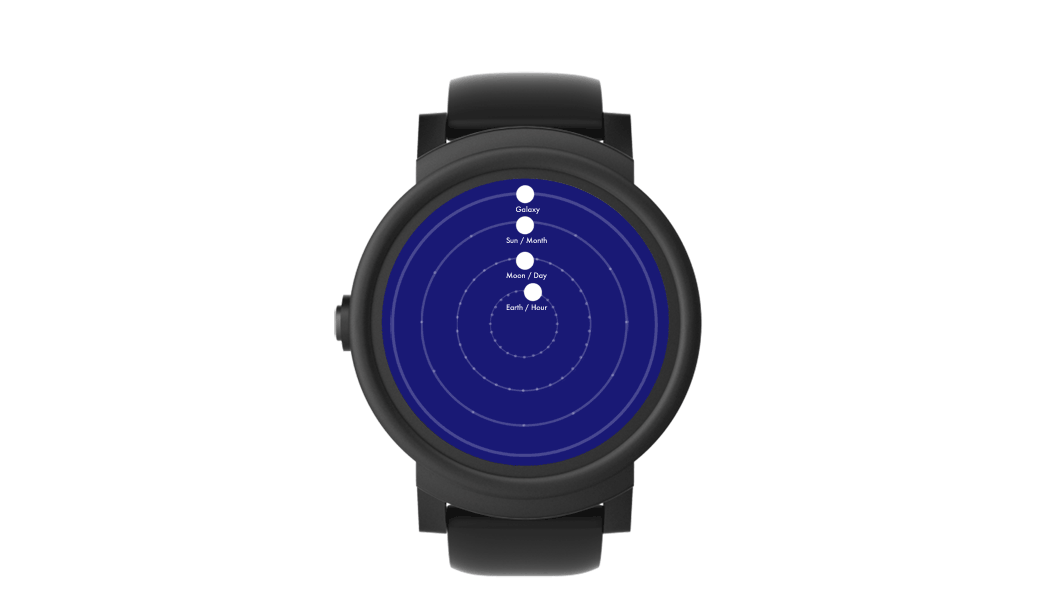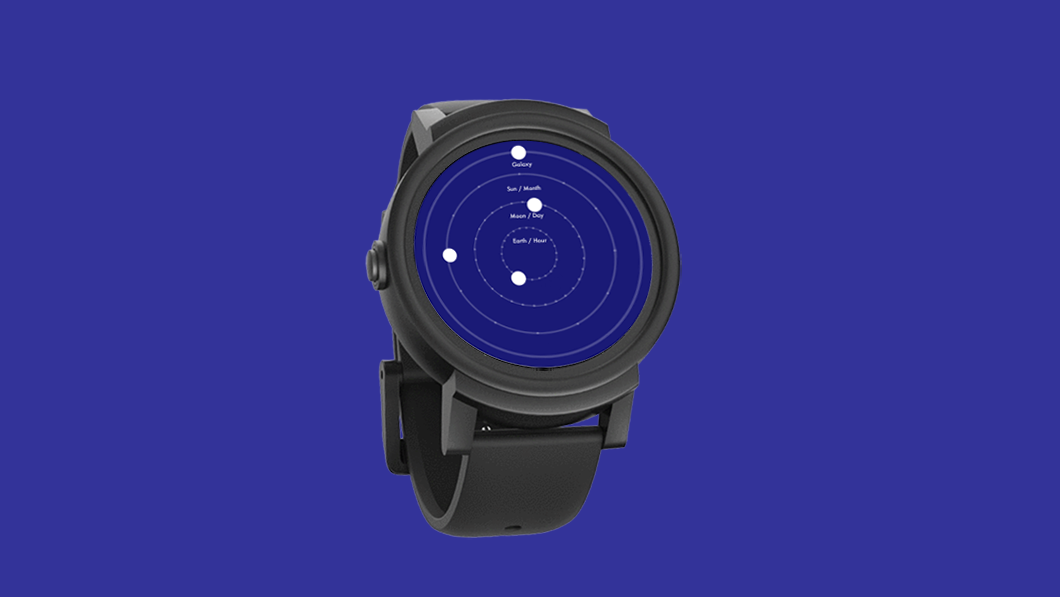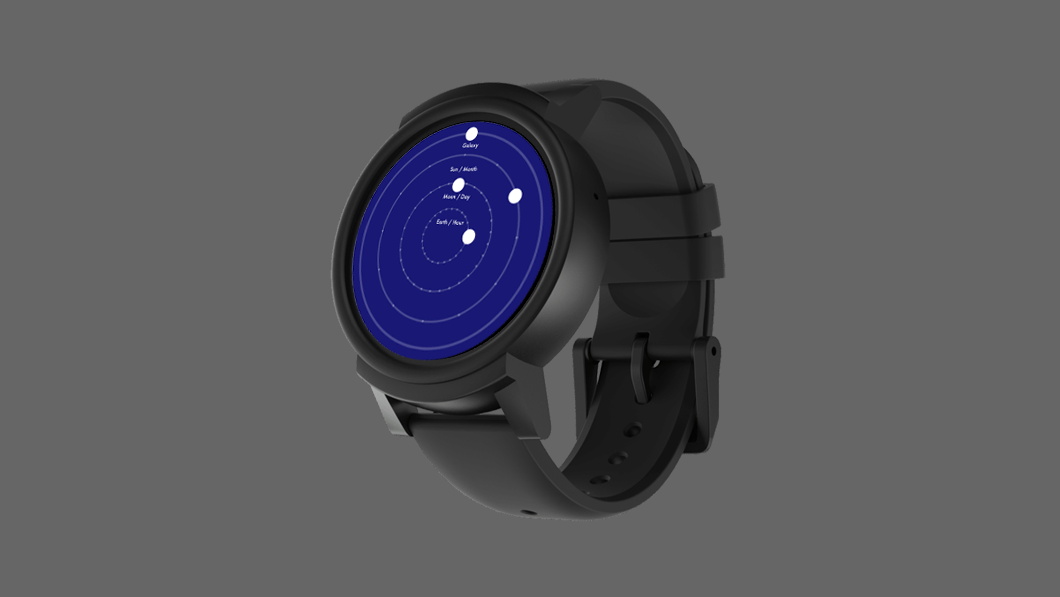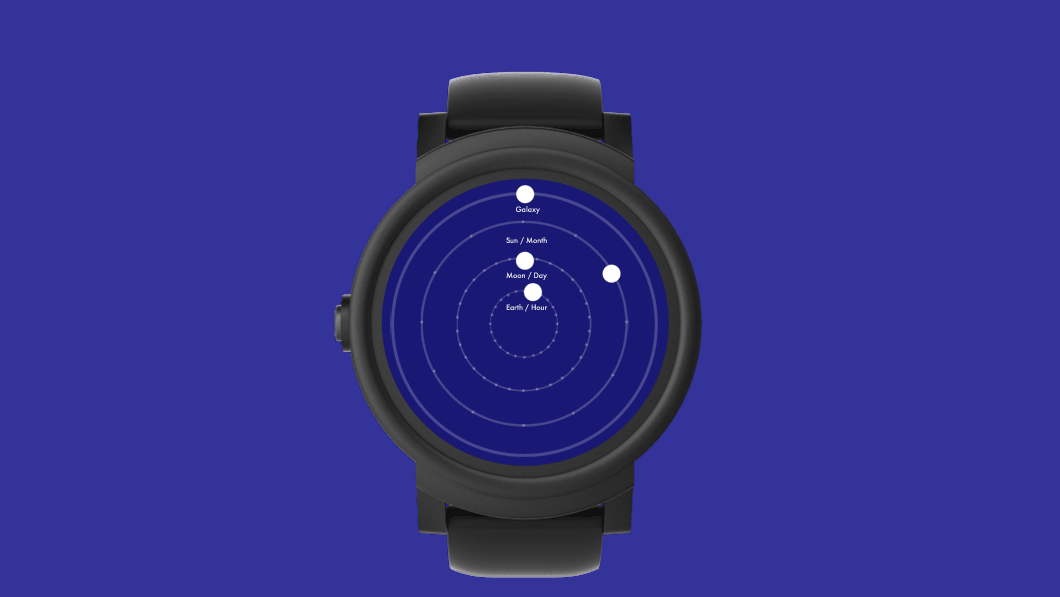| sense of time | on time |
celestial A design for time that reinforces the cyclical nature of times passage, from the temporally-micro of 24 hours to the temporally-macro of 250 million terrestrial years.     |
|
references & inspiration |
|||
Time at its most objective is measured through and against the changing celestial orbits and rotations of the planets. This is the core basis of time as we know it. The rotation of the Earth on its axis defines 24 hours of a day, a full orbit of the Moon around the Earth defines a calendar month, and a complete orbit of the Earth around the Sun defines a year. We can further contextualise our own place time against the heavens by considering that the Sun is in-turn orbiting the galaxy, and that this orbit takes a staggering 250 million terrestrial years to complete (known as a Galactic Year). This view of deep time not only marks our remarkably rapid progress in such a contextually short space of time, but illustrates the fragility of the tiny window of opportunity for conscious life within time. - Ted Hunt |
We are born into a world of natural cycles. This is the time to remember the power they hold. - Merilyn Keskula |
||
